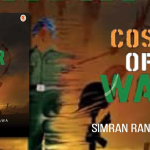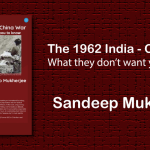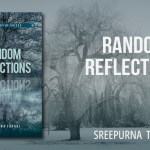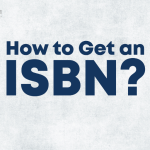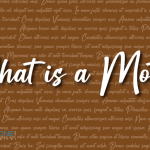Biblical fiction is a distinct literary genre that combines aspects of historical storytelling with biblical-inspired storylines. In this genre, authors reinterpret, interpret, or build on biblical stories, characters, and events, merging factual and imaginative aspects to create captivating narratives. In contrast to religious scriptures or commentaries, biblical fiction utilises artistic licence to explore the hidden experiences, views, and emotions that may lie beyond the surface of the biblical events.
Key Features of Biblical Fiction:
- Historical Authenticity: Authors in this genre frequently perform extensive study to achieve historical correctness in presenting biblical locales, civilizations, and traditions. The idea is to immerse readers in the historical setting while also allowing for creative narrative.
- Creative Interpretation: While biblical fiction is based on historical events, it allows for artistic interpretation. Authors may fill gaps in the biblical narrative, offer fresh viewpoints on well-known tales, or even incorporate fictitious characters to enrich the overall story.
- Exploration of Themes: The genre provides a platform to explore a wide array of themes present in the Bible. Themes such as faith, resilience, morality, and human nature are often central to biblical fiction, offering authors opportunities to delve into the complexities of the human experience.
- Character Development: Biblical fiction often involves the in-depth exploration and development of characters found in the Bible. Authors may provide backstories, motivations, and emotions to characters, adding depth and nuance to their personalities.
- Respectful Approach: Given the sacred nature of the Bible, authors approach their subjects with a delicate balance of respect and creativity. While taking liberties with the source material, successful biblical fiction maintains a sense of reverence for the religious and historical significance of the stories.
You may also link: Book Writing Tools That Actually Make a Difference
Why Biblical Fiction Matters:
- Cultural Engagement: Biblical fiction engages readers in a cultural dialogue, encouraging them to connect with ancient stories in a new and relatable way. It bridges the gap between contemporary readers and the historical context of the Bible.
- Exploration of Faith: For those with a religious background, biblical fiction provides a fresh perspective on familiar stories, prompting readers to reflect on their faith and consider alternative interpretations.
- Literary Exploration: Beyond religious contexts, biblical fiction offers literary enthusiasts a unique genre that combines elements of historical fiction, drama, and storytelling. It adds diversity to the literary landscape by drawing on ancient narratives.
- Timeless Relevance: The themes explored in biblical fiction—such as love, sacrifice, and resilience—are timeless and resonate with readers across different cultures and belief systems.
5-Step for the Beginners who are planning to delve in the world of Biblical Fiction
Here’s a 5-Step list for the beginners to delve in the world of biblical fiction.
- Step 1 – Defining Biblical Fiction
- Step 2 – The Intersection of History and Imagination
- Step 3 – Exploring Themes and Characters
- Step 4 – Navigating Sensitive Topics with Respect
- Step 5 – Finding Noteworth Biblical Fiction Works
Step 1: Defining Biblical Fiction
Biblical fiction, a captivating literary genre, takes readers on a journey through the corridors of time, intertwining creative storytelling with the sacred narratives of the Bible. It encompasses novels and stories that unfold against the rich tapestry of biblical events, infusing life into ancient tales while introducing imaginative elements.
At its core, biblical fiction maintains a delicate balance between historical and creative dimensions. Authors delve into the sacred texts, extracting characters, settings, and events, and then weave them into compelling narratives. This genre doesn’t merely retell stories; it reimagines them, offering fresh perspectives and filling gaps left by the biblical accounts. The essence lies in the fusion of historical authenticity with the author’s creative interpretation, providing readers with a literary experience that resonates with both the familiar and the unexpected.
For instance, Anita Diamant’s “The Red Tent” transports readers into the biblical world of Dinah, Jacob’s daughter, offering a unique perspective on her life—an angle not extensively explored in the Bible. Diamant’s creative narrative breathes new life into a character often relegated to the sidelines, exemplifying how biblical fiction can illuminate untold stories and amplify the richness of the biblical tapestry.
You may also like: Fantasy Books complete publishing guide in India 2024
Step 2: The Intersection of History and Imagination
Biblical fiction stands as a testament to the harmonious intersection of historical authenticity and creative imagination. Authors delve into meticulous research, immersing themselves in the rich tapestry of biblical times to ensure a vivid portrayal of the era. This dedication to historical accuracy creates a solid foundation, allowing readers to step into ancient landscapes and witness cultural nuances with a sense of authenticity.
Take, for instance, the biblical narrative of Noah’s Ark. While the Bible provides a succinct account of the flood and the ark’s construction, biblical fiction allows authors to breathe life into the story. Through exhaustive research, an author might depict the architectural marvel of the ark, incorporating historical details about construction techniques and materials used during that period. This blend of historical precision forms the backdrop against which creative imagination flourishes.
In the hands of a skilled author, the ark becomes more than a vessel; it becomes a symbol of human resilience and divine intervention. Characters aboard the Ark, historically rooted, take on dimensions of personality and emotion that resonate with readers. This intersection allows biblical fiction to transcend mere historical reenactment, offering readers a captivating journey that fuses the lessons of the past with the artistry of creative storytelling. As readers traverse the pages, they find themselves not only immersed in history but also transported by the imaginative spirit that breathes new life into timeless tales.
Step 3: Exploring Themes and Characters
Biblical fiction serves as a dynamic literary canvas for authors to explore a diverse range of timeless themes and characters embedded in the Bible. One prominent theme frequently explored is the resilience of biblical heroes facing adversity. Through creative interpretation, authors can delve into the emotional and psychological landscapes of characters such as David facing Goliath, unravelling the untold facets of their journeys and portraying them as more than mere historical figures.
Additionally, the complexities of moral dilemmas take centre stage in biblical fiction, allowing authors to navigate the intricate ethical challenges faced by characters like Abraham and his moral struggle with the command to sacrifice his son Isaac. This exploration adds layers of depth to the characters, transcending the black-and-white narratives often found in religious texts.
Moreover, biblical fiction becomes a literary arena for authors to emphasise the overarching theme of faith. By portraying characters like Noah or Job in moments of profound faith or doubt, authors can illuminate the intricacies of human belief systems, sparking reflection among readers about their own spiritual journeys.
You may also like: WhiteSmoke Review: Features, Pricing, Pros and Cons
Step 4: Navigating Sensitive Topics with Respect
In crafting biblical fiction, authors encounter the delicate task of navigating sensitive topics with a harmonious blend of creativity and respect for the sacred source material. The Bible, as a revered text, encompasses religious beliefs, historical controversies, and cultural nuances that demand careful consideration.
Authors must approach these subjects with a nuanced understanding, acknowledging the gravity of the content while allowing for creative reinterpretation. Striking a balance between artistic expression and reverence is crucial to avoiding unintended offense. For instance, when exploring religious beliefs, an author might delve into the internal struggles of a biblical character without directly challenging established doctrines, fostering a thoughtful dialogue rather than outright dissent.
Historical controversies, such as the interpretation of certain events or figures, can be addressed with a respectful acknowledgment of diverse perspectives. By presenting alternative viewpoints within the narrative, authors can invite readers to contemplate various interpretations without dismissing the significance of the original text.
Cultural nuances demand a similar careful approach, ensuring that portrayals are culturally sensitive and do not perpetuate stereotypes. A successful example would be depicting biblical settings with historical accuracy while remaining mindful of contemporary cultural sensibilities.
You may also like: Exploring English Literature: Literary Landscapes
Step 5: Finding Noteworthy Biblical Fiction Works
Exploring noteworthy works within the realm of biblical fiction reveals a rich tapestry of literature that spans classic novels to contemporary masterpieces, each contributing to the genre’s diversity and depth. One such classic is “The Red Tent” by Anita Diamant, which reimagines the story of Dinah, a character from the Book of Genesis. Diamant’s narrative weaves an intricate and compelling tale around Dinah’s experiences, providing a fresh perspective on a lesser-known biblical figure.
Moving to a more contemporary example, Geraldine Brooks’ “The Secret Chord” delves into the life of King David. Brooks skillfully combines historical accuracy with imaginative storytelling, exploring the complexities of David’s character and the political landscape of ancient Israel. The novel offers readers a nuanced portrayal of a well-known biblical figure, blending fiction with elements rooted in historical accounts.
Another noteworthy work is “The Book of Longings” by Sue Monk Kidd, which introduces a fictional wife of Jesus named Ana. Kidd’s novel sparks contemplation on the untold stories of women in biblical times and presents a narrative that combines historical settings with a bold reimagining of religious history.
These examples exemplify the genre’s ability to breathe new life into familiar tales, offering readers fresh perspectives on biblical characters and narratives while showcasing the enduring appeal and versatility of biblical fiction.
Read: A Strategic Way on How to Create a Book Marketing Plan That Works?
Biblical fiction is a genre that takes readers on a trip where history and imagination collide. This genre presents a rich tapestry of storytelling that captivates both religious and secular readers via its investigation of biblical themes and characters. Biblical fiction, whether diving into the familiar or finding the unfamiliar, provides a literary experience that transcends time and tradition.
Publish your book with BlueRoseONE and become a bestselling author. Don’t let your dream of becoming an author fade away, grab the opportunity now and publish your book – be it fiction, non fiction, poetry or more.



